How It's Made
Say Hello to Rafe Chisolm, Senior Product Designer

What do you do?
I’m a Senior Product Designer on the Instacart Acquisition team, focused on growing our customer base. We always want to reach new people, so we work with paid placements, SEO, virality, retailer marketing, in-store experiences, and perform lots of different design experiments. And because our work is focused on first impressions we make with people, we do a lot of storytelling as well. How people perceive and connect with almost anything is something I’ve always been curious about. And connecting with food? It’s something we all need every day — so it’s a cool challenge to tackle with this team.
How did you get into design?
There wasn’t any one moment, but I feel like design kept emerging at different points and contexts in my life. As a kid, I was into science and tech and had a constant scrawl of “inventions” in notepads, which morphed into using CAD in high school.
Then it was pre-law in undergrad, where I studied Intellectual Property. In parallel, studies in computer science, sociology, and a study abroad in Cape Town raised a lot of questions around the role of art and media in society.
Ultimately, when I went back to art school I worked with a friend at an independent label/agency, as well as with a local art gallery. That resulted in my first in-house design job at the High Museum of Art in Atlanta, which was amazing because aside from my primary project, which was working on the Louvre partnership, I had pretty much unlimited access to exhibits, visiting artist talks, and films. I think that experience framed how I approached work as a place to always be learning something.
What makes everything worth it?
I really like solving problems. There’s something intrinsically enjoyable about finding a new perspective or just evolving an experience to what it minimally should be — so that you can evolve ten steps past that as quickly as possible.
What’s the greatest piece of career advice you’ve ever received?
Don’t ask for permission when presenting solutions. Which is different from not asking for permission when creating problems, which means also practicing empathy for how your work impacts the project, your teammates, and ultimately, society as a whole.
What advice would you give to a designer just starting out?
Do work you enjoy whenever possible, and be transparent with those who can help you along the way.
Work towards self-awareness: How do you treat your work, yourself, the people you work with, and life overall?
Try and solve for the least considered or most difficult scenarios.
Accessibility and inclusion matter intrinsically because they can lead to better solutions — if you don’t care about people, why design things for them? So be an advocate in your work and your teams.
Read and learn. Not just the standards, but also critical pieces like Mike Monteiro’s Ruined by Design and Simon Sinek’s Start with Why. You have a right and duty to ask hard questions. Each discipline and function has its own role, but as designers you can visualize and storytell, so use it to ask, frame, and tackle hard questions.
And try and do things that inspire you that aren’t related to work, whether it’s volunteering, mentoring, or creating.
Where do you find inspiration?
On a personal level, I’m inspired by my daughter, who’s developing her visual chops, photographs, writes, and all of that. On a creative level, design peers and friends wherever I am — whether I can learn from them or share something with them. On an artistic level, my wife, who’s a textile designer and actually constructs her own clothing, something I’ve been wanting to learn. Along with music, comics, sci-fi, magazines, films, random reads or speculative fiction. I always love reading Octavia Butler’s work because she was a genius at framing societal impacts with a 10-, 50-, 100-, or hundreds-of-years perspective, past or present — all from a black female lens. I sometimes look at photos from her exhibit at the Huntington just to remind myself of what we’re capable of.
Working on various projects at Instacart, which one was the most challenging and exciting for you?
I’ve just started, but I think if there’s any challenge its holding yourself back from all the opportunities you might see in an evolving and rapidly growing stage of the product. Everything touches on the basic human need to eat food, and that can have a connection and output to a lot of things. So rooting into what is essential, what is eventual, and what would be truly special is the challenge anytime you sit down and start thinking and designing. It’s challenging to constrain your work, too, but fun.
Where did you grow up and what made it special?
I grew up in a few places, but part of my childhood was in the Northeast, and the latter part of growing up was spent in the South. Culturally, the social norms are very different. I think in any case, people are what make a place special — take them out of the equation and a place is sometimes just a place.
What was the first thing you ever designed?
I had a lot of wild ideas as a kid, so I don’t completely remember. Some ideas I had were structures that would saturate with fire retardant in case of a fire, compounds that could refill the ozone, and occasionally I’d draw superheroes. I read a lot of comic books growing up, so I think that inspired my formative thoughts around imagining things to help people. I don’t know how far off the mark any of those concepts were, but a part of me still views design as a kind of superpower that can also be detrimental if not used correctly. So thanks, Stan Lee! In high school (if we’re talking about actually designing with industry tools), I designed stuff with one of my best friends in AutoCAD class and would occasionally sneak into his screenprinting class to try my hand at some of that stuff.
What is something you’re most proud of in your life/career?
I don’t really think of specific things so much as the times I was willing to take chances and just do something different that I cared about, which applies to work and my personal life. I’d say the day I quit my law firm gig was maybe the biggest one. I remember at the time Janelle Monae had this song, “Lettin’ Go,” and I would listen to that every day I went to work. It inspired me in part, to go on tour to document my friends’ band in a beat up van that went from Atlanta to Toronto. I got to document my friends, but also meet people like Thundercat, J*Davey, document Afro Punk in its nascent days and visit CBGB shortly before it was shutdown. It was a complete break from a career that wasn’t at all fulfilling. So working on things that are fulfilling and interesting — I think that’s what I’m most proud of at any given time. In life, just my family, man. I’m always proud of them.
What favorite Bay Area secret spot can you reveal?
I love Bar Shiru and Red Bay Coffee in Oakland. And in Atlanta, Le Petit Marché and Bon Ton.

Come build with Rafe.
If you’re excited about defining the future of a one trillion dollar industry, building an ad-serving network for groceries, scaling the world’s most extensive grocery catalog, perfecting a real-time on-demand logistics chain, all while simultaneously designing the future of food for millions of people, you should take a look at the available opportunities or reach out to someone from the team.

Most Recent in How It's Made
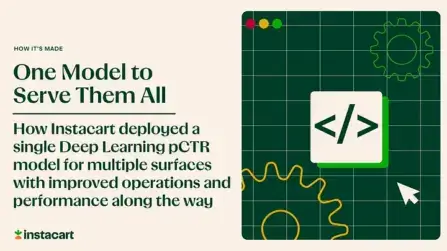
How It's Made
One Model to Serve Them All: How Instacart deployed a single Deep Learning pCTR model for multiple surfaces with improved operations and performance along the way
Authors: Cheng Jia, Peng Qi, Joseph Haraldson, Adway Dhillon, Qiao Jiang, Sharath Rao Introduction Instacart Ads and Ranking Models At Instacart Ads, our focus lies in delivering the utmost relevance in advertisements to our customers, facilitating novel product discovery and enhancing…
Dec 19, 2023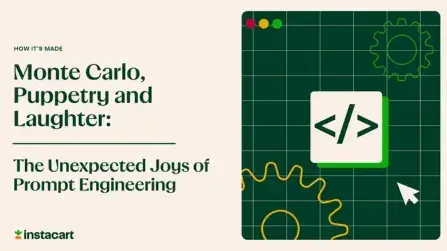
How It's Made
Monte Carlo, Puppetry and Laughter: The Unexpected Joys of Prompt Engineering
Author: Ben Bader The universe of the current Large Language Models (LLMs) engineering is electrifying, to say the least. The industry has been on fire with change since the launch of ChatGPT in November of…
Dec 19, 2023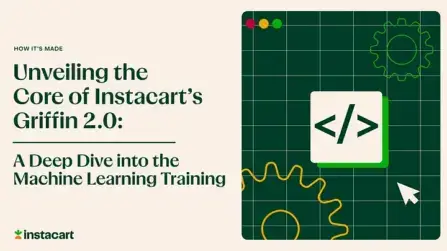
How It's Made
Unveiling the Core of Instacart’s Griffin 2.0: A Deep Dive into the Machine Learning Training Platform
Authors: Han Li, Sahil Khanna, Jocelyn De La Rosa, Moping Dou, Sharad Gupta, Chenyang Yu and Rajpal Paryani Background About a year ago, we introduced the first version of Griffin, Instacart’s first ML Platform, detailing its development and support for end-to-end ML in…
Nov 22, 2023

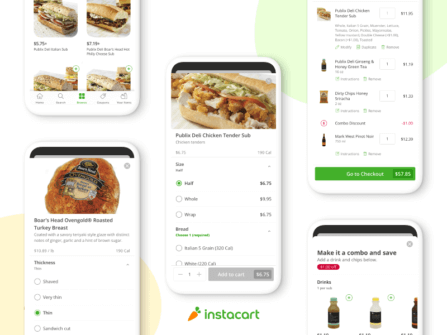 Building Instacart Meals
Building Instacart Meals 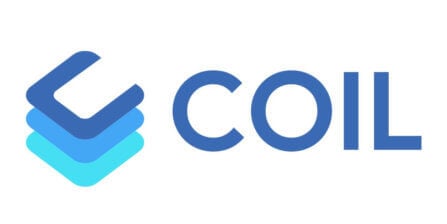 Introducing Coil: Kotlin-first Image Loading on Android
Introducing Coil: Kotlin-first Image Loading on Android 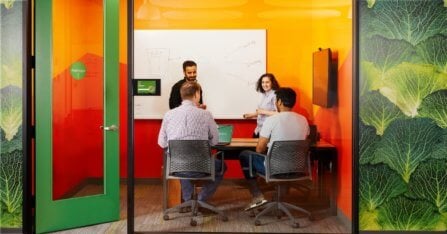 7 steps to get started with large-scale labeling
7 steps to get started with large-scale labeling 
